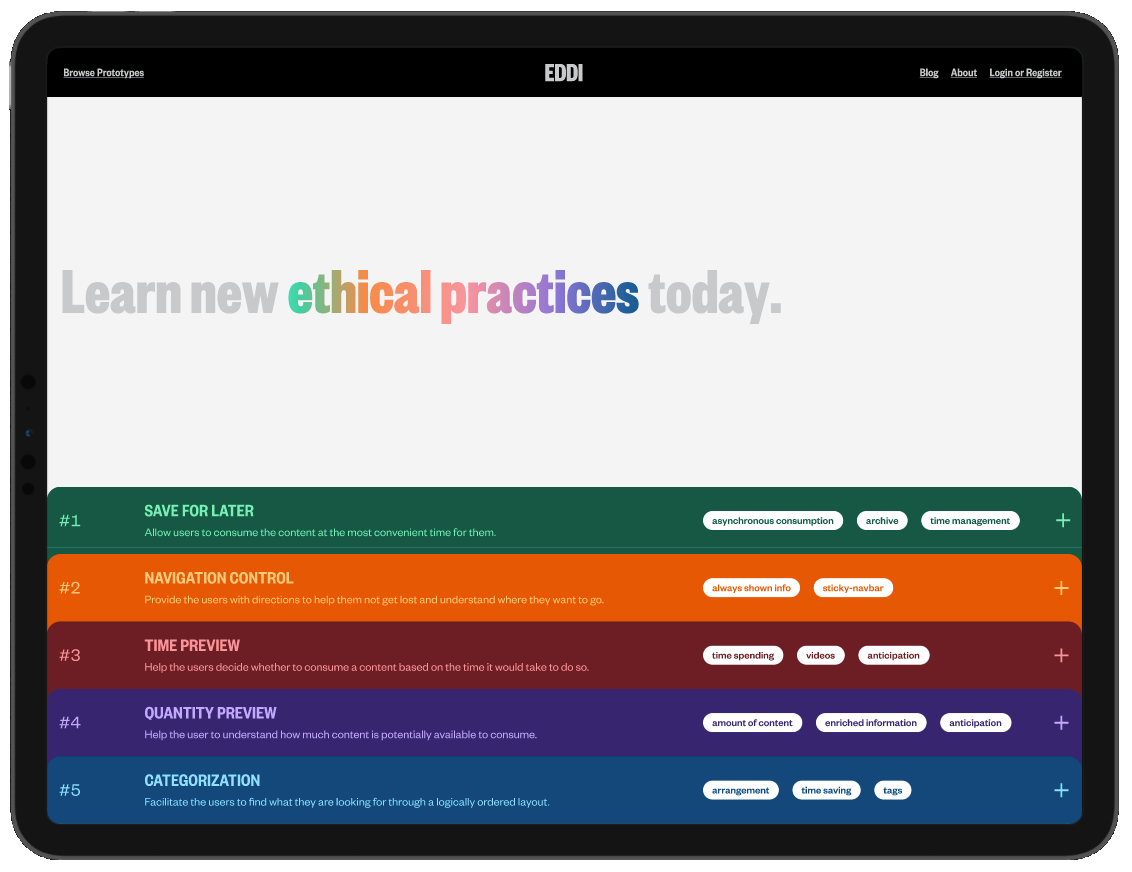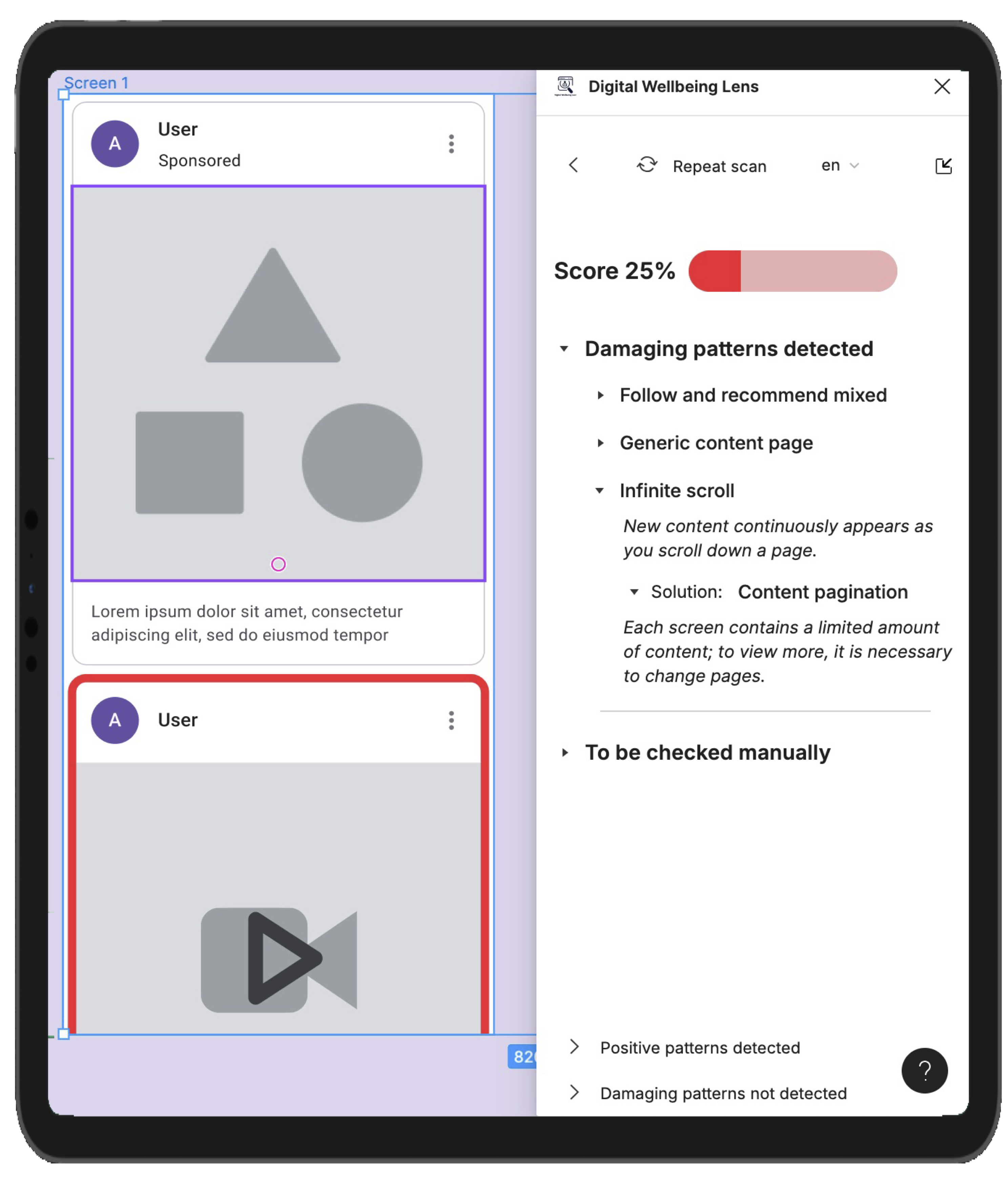New Research on Digital Attention Heuristics Published in TOCHI
We are excited to announce that our latest research, The Digital Attention Heuristics: Supporting the User's Attention by Design, has been published in the prestigious ACM Transactions on Computer-Human Interaction (TOCHI). The research, led by Alberto Monge Roffarello and Luigi De Russis from Politecnico di Torino, in collaboration with Kai Lukoff from Santa Clara University, introduces a set of eight design heuristics aimed at preserving user attention and fostering digital wellbeing.
The paper addresses the growing concern around "attention-capture" designs employed by tech companies, which often exploit users' psychological vulnerabilities to maximize engagement. Examples of these attention-capture designs include the infinitely scrollable newsfeed of Instagram or the autoplay of the next video on YouTube. Unlike traditional digital wellbeing interventions that place the burden of digital self-control on users, this research shifts the focus to designers, offering actionable heuristics to create interfaces that respect users' attention and time by default.
The heuristics—reported in the table below—are grounded in Self-Determination Theory, which emphasizes the three core psychological needs: autonomy, competence, and relatedness.
| Title | Description | |
|---|---|---|
| H1 | Promote user sense of agency | Design to support volitional experiences of focus and mindful awareness, allowing users to exercise their sense of agency and regain attention. |
| H2 | Informed usage sessions | Provide the user with the information necessary for making choices and deciding whether it is worth starting or continuing a usage session, ensuring a transparent design that is clear about intentions and honest in actions. |
| H3 | Balance goal-directed and ritualistic uses | Adopt designs that allow users to maximize the overall quality of time spent rather than the quantity by balancing ritualistic use (open-ended use to gratify diversionary needs) with instrumental use (goal-directed use to gratify informational needs). |
| H4 | Customization | Ensure that users can understand and customize the digital environment they are interacting with to better suit their goals, values, and digital well-being. |
| H5 | Align usage with user and context needs | Ensure the level of complexity or challenge required to start, perform, or end a usage session with a digital service is appropriate for the user and context. |
| H6 | Inform about digital well-being | Promote awareness about the digital well-being topic, allowing users to understand and internalize good practices to improve their technology use or solidify existing safe behaviors. |
| H7 | Meaningful connections | Support experiences of meaningful and fair connection to others, respecting one’s preferences and vulnerabilities and those of others. |
| H8 | Support real-world connections | Provide tools that facilitate real-world experiences and connections that go or may go “beyond the screen.” |
Each heuristic is supported by actionable strategies and real-world implementations, including Medium's estimated read time, which helps users make informed decisions about engaging with content, and the time-management tools available on Instagram and YouTube, which allow users to set daily limits and receive reminders to take breaks—accessible via platform settings.
Designers can leverage the heuristics as a robust framework for crafting user interfaces that prioritize users’ digital wellbeing as a top design goal. EDDI, for example, is a prototype of an an online platform to help designers put the heuristics into practice. It aims to inspire, engage, and guide designers in the creation of ethical digital interfaces. It enables them to explore digital wellbeing heuristics and strategies while being part of a community through the sharing of their own interfaces.

Beyond designing new interfaces, having a set of digital attention heuristics may also serve as a valuable tool for designers to critically evaluate existing interfaces and improve them. Digital Wellbeing Lens, for example, is a Figma plugin that allows designers to evaluate their prototypes against attention-capturing damaging patterns. By scanning an interface, the plugin calculates a digital wellbeing score, detecting damaging patterns (e.g., the infinite scrolling mechanism) and suggesting alternatives, as well as highlighting patterns that preserve users’ attention (e.g., videos that start after explicit interaction).

In summary, by shifting the focus from user responsibility to design responsibility, our work has the potential to shape industry practices, inform policy discussions, and convince tech companies to prioritize user wellbeing over engagement metrics.
Additional information:
